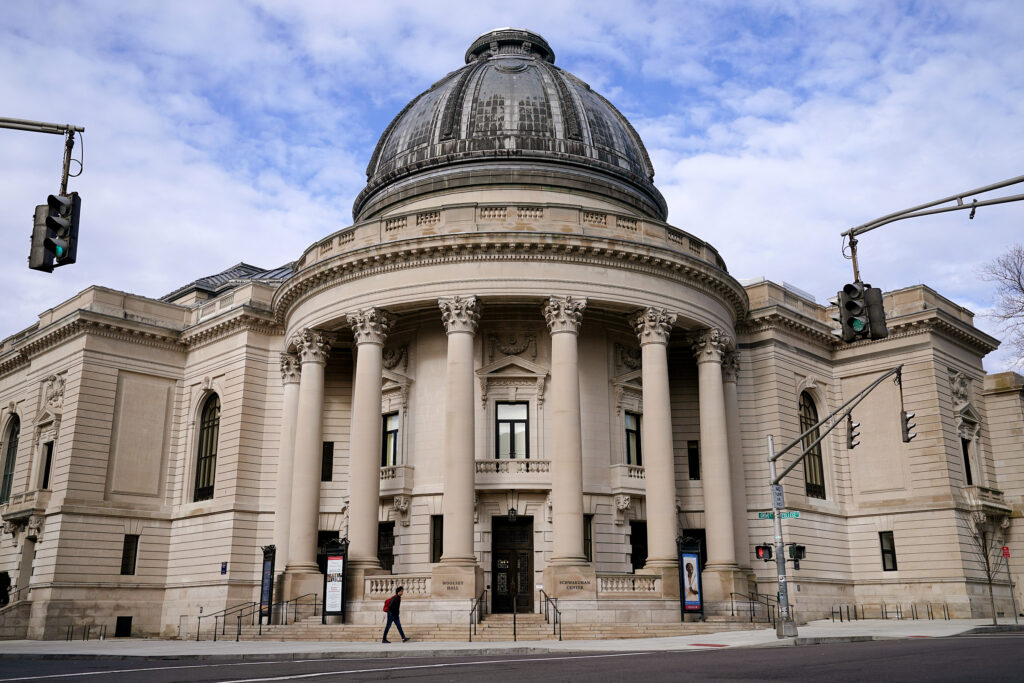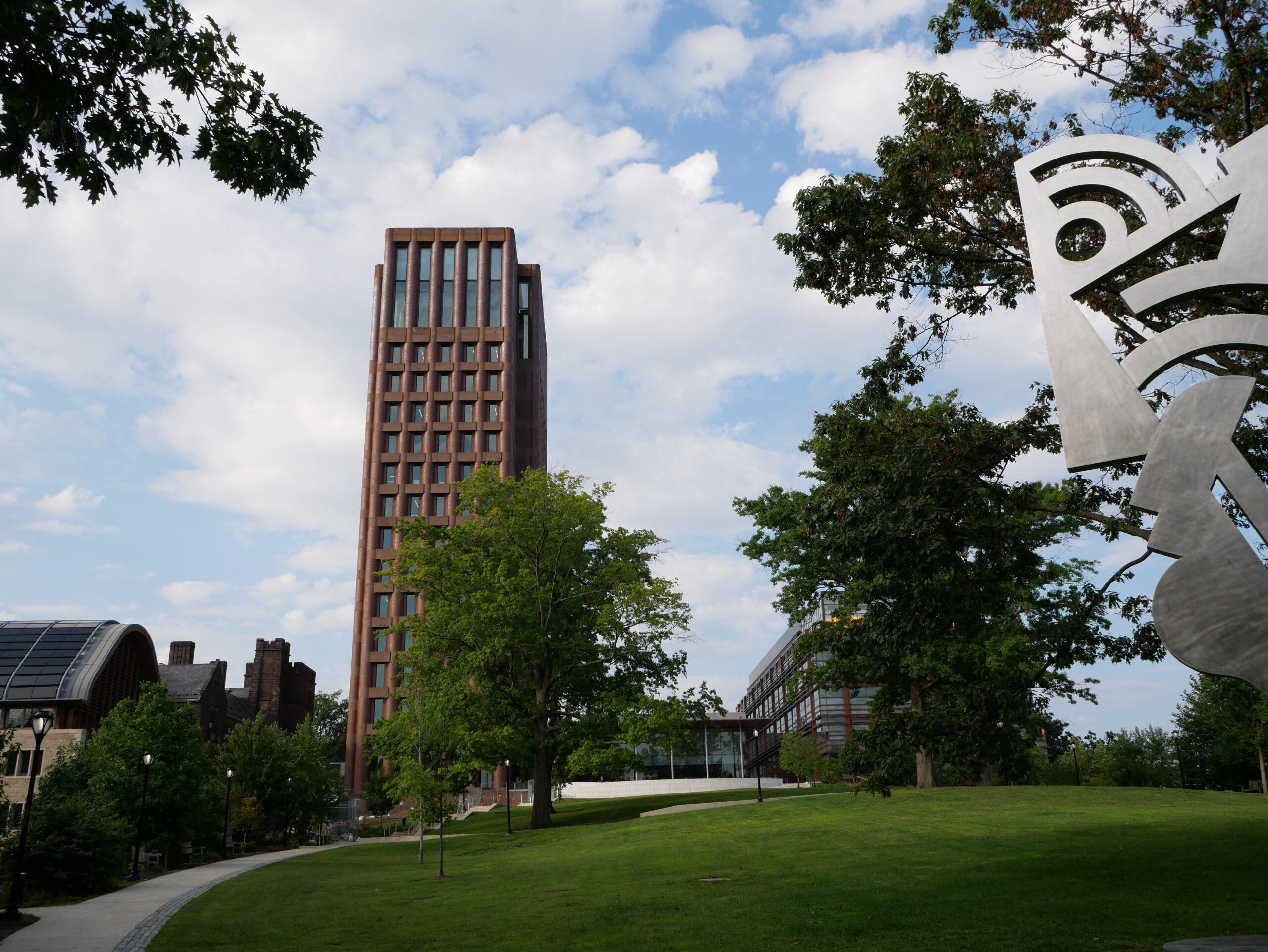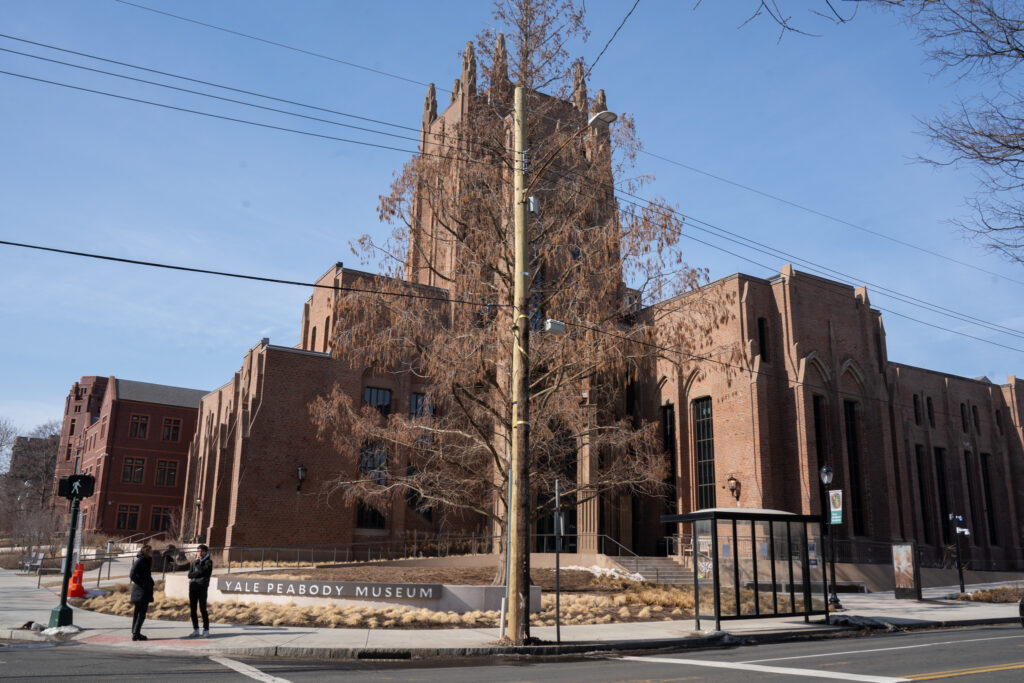Flurry of campus construction projects finished over four years
The campus has changed considerably in the class of 2025’s time here, as Yale has completed multiple major projects that began with donations in the 2010s.

Baala Shakya, Staff Photographer
Since the class of 2025 came to Yale, buildings on campus have developed significantly. The University has completed multiple construction projects and expansions, costing hundreds of millions of dollars. Many of these projects began with donations prior to 2020 and were gradually completed despite COVID-19, though several projects were delayed.
Here is how Yale’s campus landscape has changed in the past few years.
Humanities Quadrangle
The Humanities Quadrangle, formerly called the Hall of Graduate Studies, reopened on Feb. 15, 2021, after more than two and a half years of renovations. Planning for the renovation began following a March 2015 donation of $25 million towards transforming the Hall of Graduate Studies into a center for the humanities. A further $50 million donation was made by an anonymous donor, and the budget for renovations was ultimately $162 million.
The project included several substantial changes. Renovations increased the size of the original building by about 13,000 square feet, all underground. The Humanities Quadrangle, or HQ, now includes 311 offices, 28 classrooms and 24 shared meeting spaces.
“The Humanities Quadrangle will be transformative,” Tamar Gendler, at the time the dean of the Faculty of Arts and Sciences, said when renovations were completed in 2021. “It will foster new connections across departments and programs, it will enable faculty and students to share knowledge and it will cultivate new ideas and approaches.”
The tower, which used to house graduate student dormitories, was converted into graduate student study space. The tower was named Swensen Tower, in honor of David Swensen, Yale’s chief investment officer for over 30 years.
Schwarzman Center

The Schwarzman Center opened its doors on Sept. 1, 2021 — the beginning of most of the class of 2025’s first year — following extensive renovations of Commons and Woolsey Hall.
The project was funded primarily by a $150 million gift from Stephen Schwarzman ’69, which was announced in 2016 as the second largest single gift in Yale’s history. The construction included a renovated Commons, a Good Life Center location, student lounges and performance spaces.
“The activation of lunch in Commons, seating in the Underground, and grab-and-go service at the Bow Wow marks a busy start to the process of bringing the center’s spaces online,” YSC Executive Director Garth Ross said in a 2021 interview with the News.
Kline Tower

Kline Tower was rededicated on Sept. 22, 2023, after a renovation that significantly updated the building, which was originally constructed in 1966 as Kline Biology Tower.
The renovation, which involved a comprehensive interior reconfiguration, added new ground-level spaces — including Poorvu North, a satellite location for the Poorvu Center for Teaching and Learning — and two additional floors, making it the tallest Yale-owned building. Although construction was delayed by COVID-19 and initial reviews by faculty were mixed, the renovation solved flooding issues and brought in natural light.
“They’ve done magic,” astronomy professor Priyamvada Natarajan told the News in 2023. “It’s just beautiful.”
The 16-story building now houses the mathematics, statistics & data science and astronomy departments.
Peabody Museum of Natural History

The March 2024 reopening of the Peabody Museum of Natural History concluded the museum’s first comprehensive renovation in over 90 years. Among the changes was a complete restructuring of the giant Brontosaurus skeleton, which had been housed in the Peabody since 1931. What was previously a courtyard was covered with skylights to form the central gallery.
“We are excited to reopen our doors and welcome students and visitors of all ages into new and transformed galleries that better reflect the breadth of our collection, advances in scientific research and the rapidly changing world we live in,” the Christopher Renton, the museum’s associate director of communications and marketing, wrote in an email to the News after the reopening.
The update, after an $160 million gift in 2018 from Edward P. Bass ’68, included new classroom spaces throughout the museum and free admission “in perpetuity,” according to the University.
Yale Center for British Art

After two years of renovations, the Yale Center for British Art reopened to the public in March 2025 with more sustainable infrastructure and a reimagined presentation of its permanent collection.
“I’m hoping this is a new beginning,” Martina Droth, who was appointed as the museum’s director in January, said. “I feel the time has come for us to reintroduce audiences to our amazing holdings.”
Yale President Maurie McInnis, who received her masters’ and doctoral degrees from Yale’s art history department, told the News that entering the renovated YCBA felt like “visiting with old friends,” adding that she spent “countless hours with the museum’s extraordinary collection” during her time as a graduate student and curated her first exhibition there.Yale’s fiscal year 2025 capital budget is $761 million, including $425 million for major projects that cost $4 million or more.







